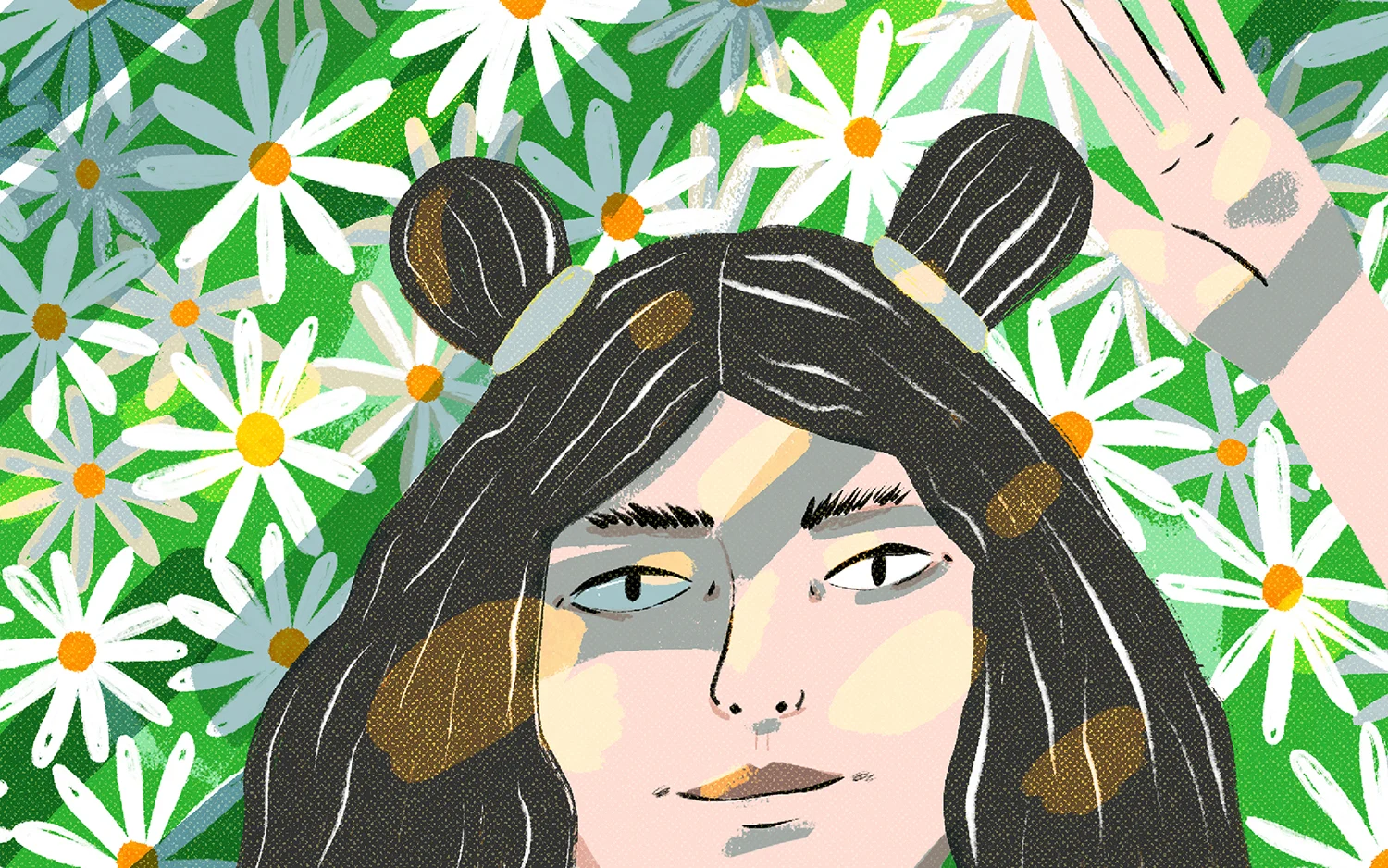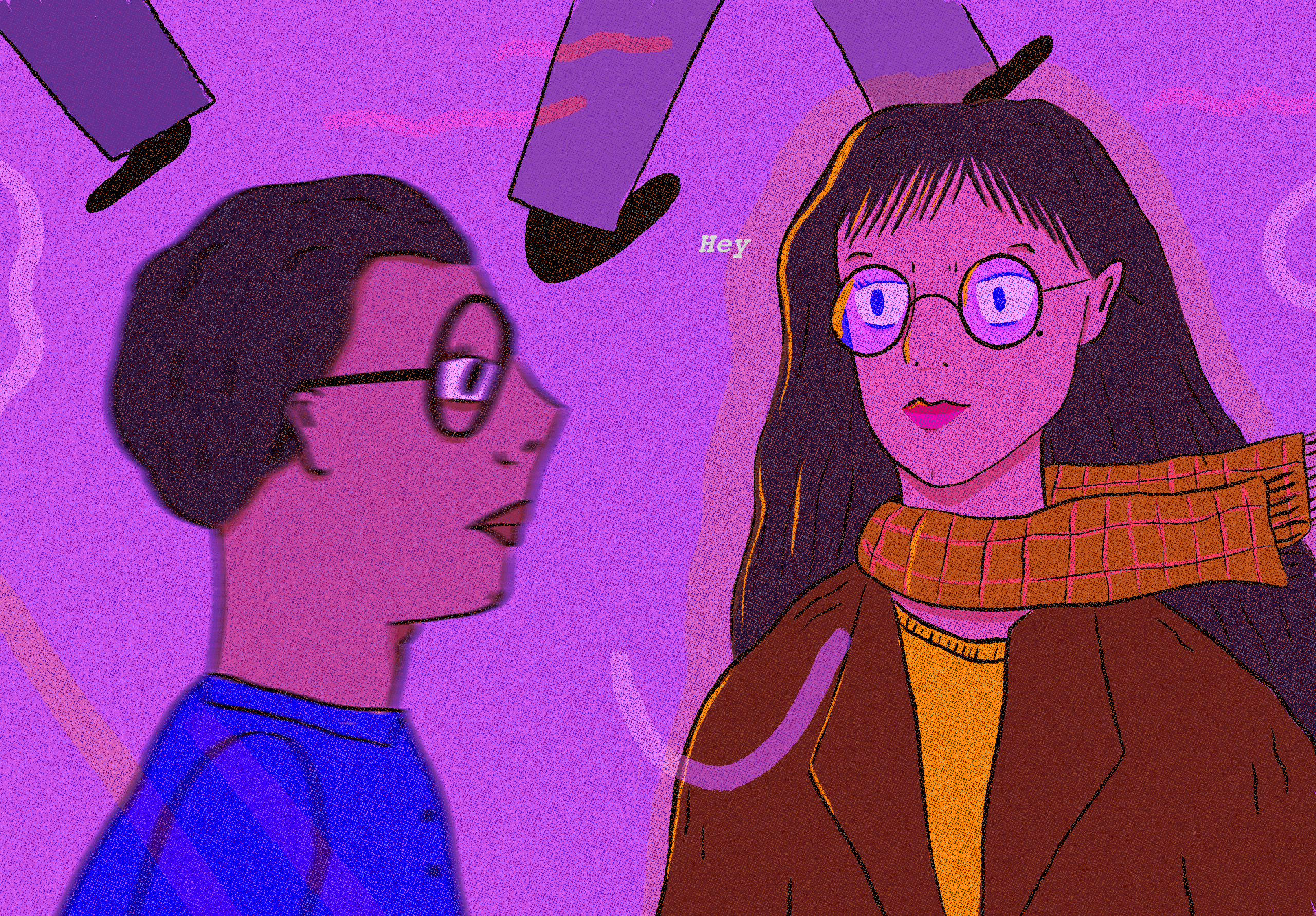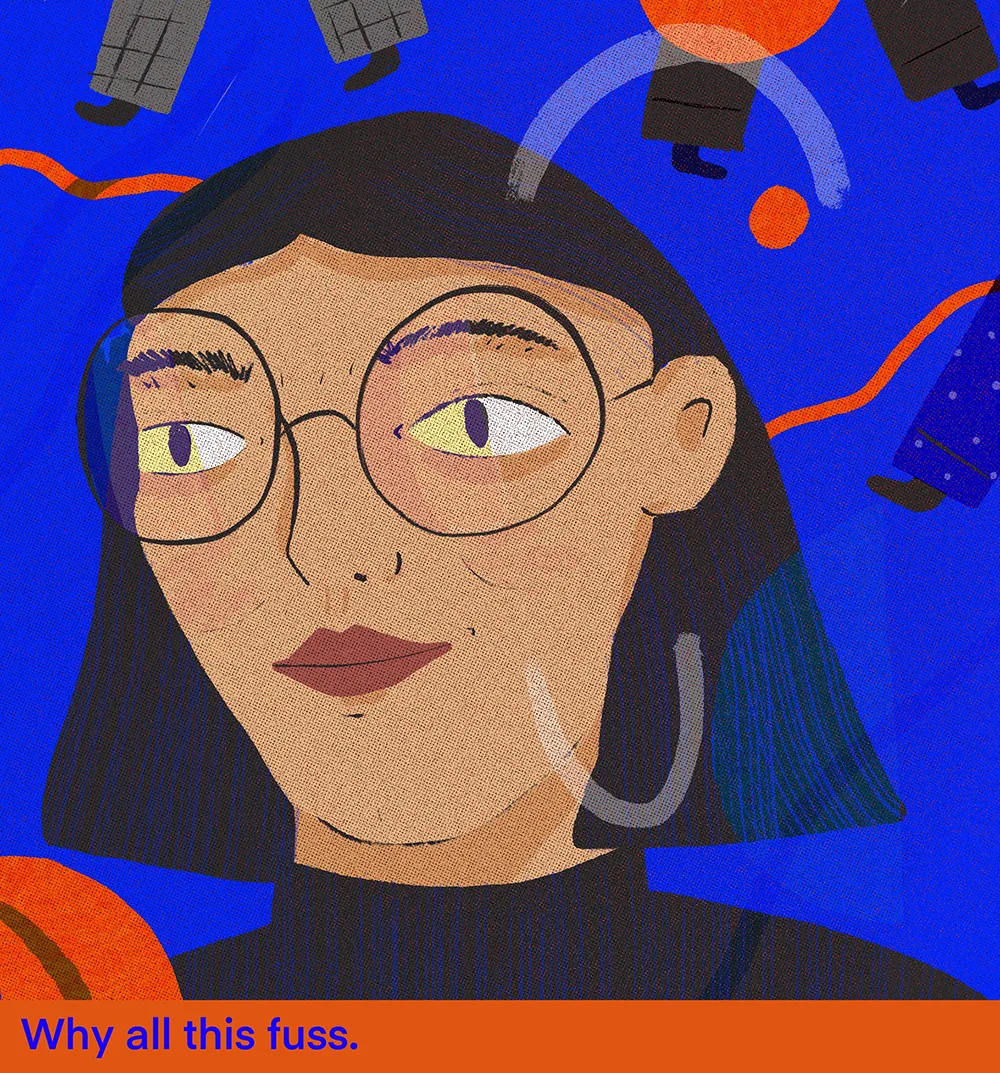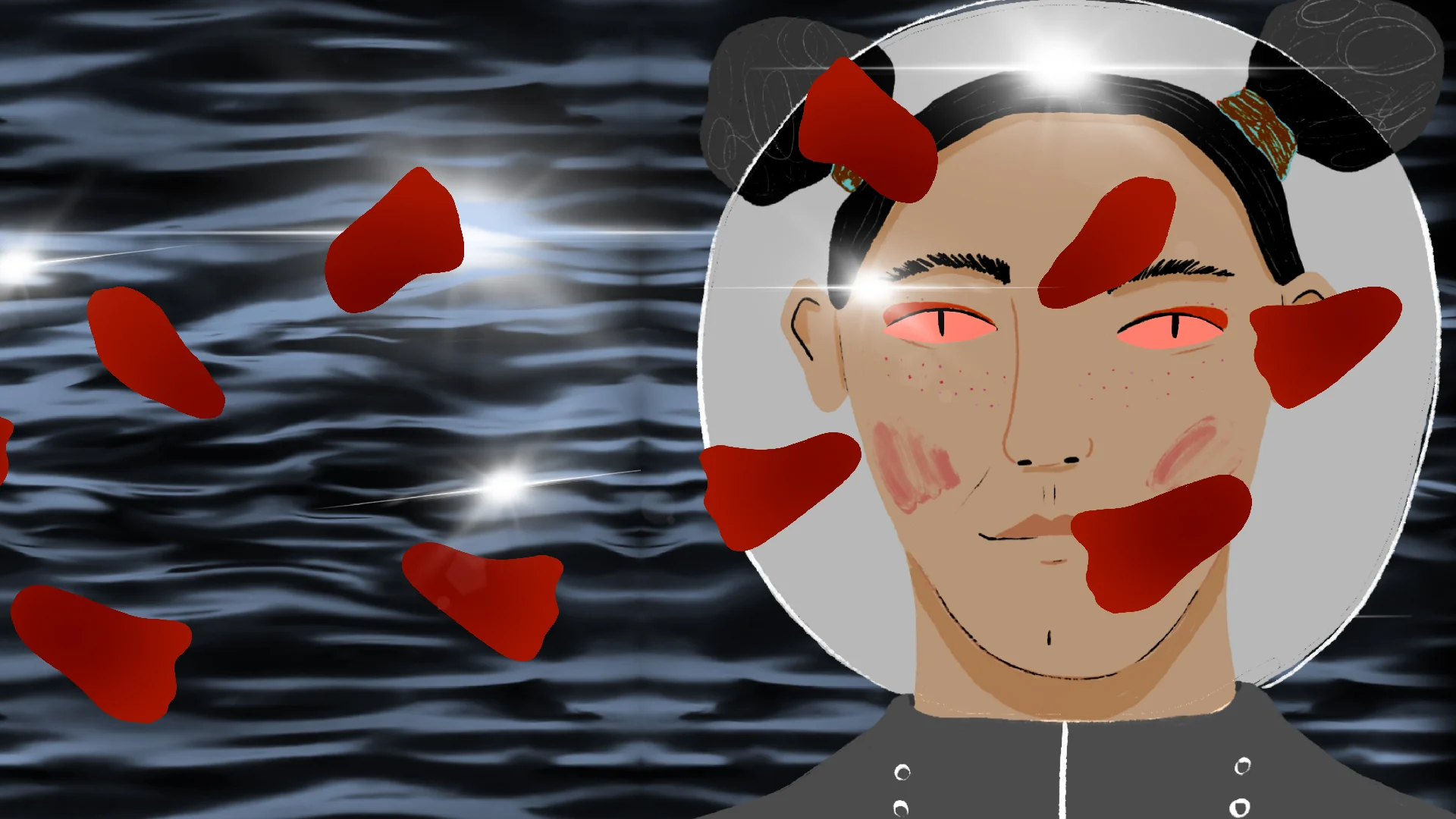

How many biologists come fine artists have you ever met (or even heard of) who also design and make video games on the side? We’re guessing the answer is not many. Writer Sanjana Varghese meets Sofi Naydenova: jack of all trades, bucking the trend by mastering...well, all of them.
When Sofi Naydenova enrolled in a university in The Hague as a fine artist she had a very specific idea of what it would be like. “I wanted to paint in the studio for the whole day, drink wine, think about the true purpose of life,” she says. “I think I over romanticized the whole thing.” She found herself unnerved by a kind of chasm between the creator and the viewer as she was creating her work.

After a year, she left her formal education in art to work on illustration. “While I was studying, I had this constant feeling that the artwork and the viewer are so distant from each other,” she explains over email. “I became an illustrator because each artwork serves a purpose.” That dynamic between the viewer and the maker influences Sofi’s work, which often features natural motifs and closeups of people’s faces. They seem like a peek into someone else’s life. In a post on Instagram from July last year, she says, “a process of creation counts as a separate artwork.” The post is a process animation of one of Sofi’s illustrations: a woman looking at a phone, surrounded by vases on a mauve background. Her illustrations often seem like panels out of a particularly beautiful comic book; like there’s a story behind them, even if it’s not obvious from the first glance.
Searching for that interaction between the creator and the viewer is crucial to Sofi’s creative evolution. Illustration provided her with one way of looking at creating art, but soon after, Sofi discovered indie game development – where people with some basic programming skills and an interest in making worlds of their own were designing games without significant financial backing. Games weren’t new to her but the concept of designing them was, and Sofi felt like she had finally found something which had all the elements of what she was looking for. “As a child, I always had a Game Boy with me,” she says. “My favorite games were Spongebob Squarepants, Lion King, even Brother Bear...I was constantly in search of those kinds of games, the kind, silly stories with funny characters that you could laugh at.”

Eventually, she found indie games that she liked. “Most of them were challenging and felt heavy,” says Sofi. “But I’m more about mindfulness and while playing, I prefer to take it slow. So I started to build these interactive experiences, and now I’m getting to the point where I can add them into my mechanical worlds.” She set up her own independent games studio called Happy Doggo Studio. Similar motifs to her illustrations – tranquility, mindfulness, nature – often feature in her games too, and her games often seem like visual novels, characterised by text and a sense of an overwhelming narrative. Designing games gives her an opportunity to develop her creative skills in ways that she wouldn’t otherwise, and it opened up the opportunity of designing something with the viewer in mind.
Growing up in Berlin and The Hague, Sofi says that her first canvasses were walls in her parents house. “With every year, my ambitions got bigger,” she says wryly. As Sofi moved from place to place, what she took inspiration from ended up shifting, almost without her recognizing it. When she was doing her fine art degree in The Hague, she found that most of her inspiration came from the world around her, a period of her life marked by a sense of tranquility. “I drew nature, still lifes, and generally my style was much calmer. In my free time, I was walking in nature, meditating and reading,” she says. She pursued a botany and biology degree eventually, which she says was an opportunity to do something she wouldn’t otherwise.
Achievements may come one day. But you just have to try and keep on doing what you love.
Mindfulness became a much more explicit element of her illustration and game development practice. Her games are often set in a tranquil landscape, accompanied by soothing music. In turn, she also combines parts of her formal academic training as a biologist with her creative output. “I can take this scientific approach, and apply it to illustration...dissecting the style of an image, deepening my knowledge to add to my practice,” she says. This ability to break things apart and put them together differently proved useful when Sofi set up Happy Doggo Studio, particularly as it gave her an opportunity to develop new skills.
Everything changed when she moved out of the countryside and into the city. “I started to get inspiration from modern pop culture and started to draw dreamy, nostalgic scenes. I think it's compensation for the seriousness and roughness of living in the city,” she says. Parts of city life make it into her illustrations too. One, on the subway, is dark and muted, with two people facing each other but not making eye contact. Eventually, the hectic pace of her life led Sofi in other directions. She wanted to actively create an oasis of calm, something that she could make for herself.
With illustrations, I want to fixate on a moment, but with games, I want to fixate on an experience.
“With illustrations, I want to fixate on a moment, but with games, I want to fixate on experience,” she says. “While the sources of inspiration are the same, the outcomes will be very different. I wanted the audience to have a choice while exploring the worlds that I create.” That sense of autonomy and connection between the player and the creator is crucial to Sofi’s practice. She can tweak certain elements in her games by changing the color palette, or adding another level of gameplay and have a whole new world. That’s not to say that it’s been easy. “I think you have to know the rules of each industry, but you can’t forget about yourself and your vision,” she explains. Since setting up her own studio, Sofi has released five games, all of which exemplify that tranquility. Some of her more recent games, such as Quarantini, about two friends getting through quarantine together, are about the challenges that she’s facing now.
Designing games is an opportunity to elongate the lifespan of the moments that Sofi draws in in her illustrations. “If applied correctly, games are a really powerful source of self discovery,” says Sofi. “It’s a beautiful escape, and it’s an attempt to go back to this careless, wild part of the mind which can be suppressed by the pressure of society.” The idea of autonomy over the role that you play is integral to Sofi’s move into game development, something which she says was spurred by the realisation that she could be the hero of the story in the game. “Crashing cars in GTA feels deeply satisfying, but I obviously wouldn’t do this in real life,” she adds.

There are certain elements of game design that she’s still figuring out. While her visual art lends itself easily to expression, she admits that she has some way to go with the actual programming of her games. “I start with my strongest parts – world building, character design and narrative”.
“The programming skills need time to evolve,” she says. But making a game is also more than just programming. As a solo game developer, Sofi says she’s found that the skills she needs to develop are multidisciplinary. Several elements go into making a game, even if it’s just for fun – there’s the psychological elements, to keep that element of reward and make sure you keep playing. There’s the actual game design, which can be overwhelming when you’re presented with a blank slate, then there’s music too, which is something Sofi is increasingly veering into as she continues to develop her artistic practice.
“I think the best job I’ve done so far is the Mend game,” she says. The game is about healing from a traumatising experience, split into 22 levels, which you play as a cat. Each level is accompanied by an experimental piano composition that Sofi made herself, the first time she’d ever done so. That interaction between viewer and creator which Sofi has been chasing in her visual work took on another dimension when she made music. Another one of her games is Arriving Home, about a woman who likes to dream. She ends up at a crossroads, where she has a choice – she can go somewhere safe, or she can explore. The choice is up to the player.
Sofi’s games tend to ruminate on similar themes: the reality of being alive, the complications of healing from trauma, the soothing patterns that we fall into. The new game that Sofi is working on is called the Ugly Show, which she explains is themed around finding light even in deep darkness. It feels like a welcome message, particularly at the moment. “Achievements may come one day. But you just have to try and keep on doing what you love,” says Sofi. “I’ll never get bored with my life again.”


